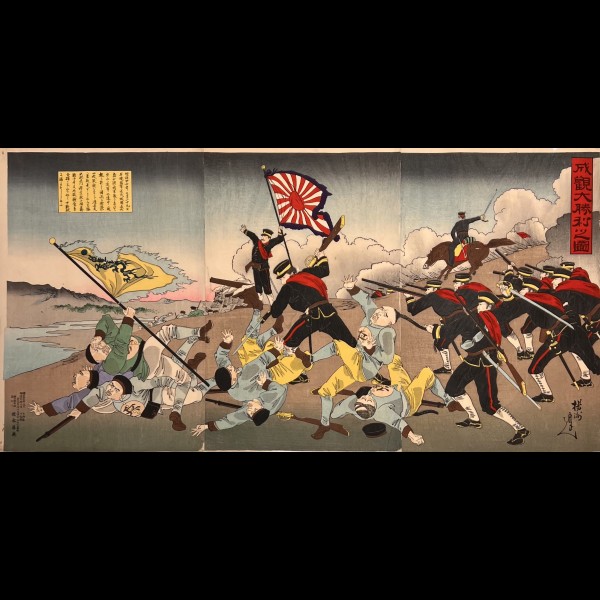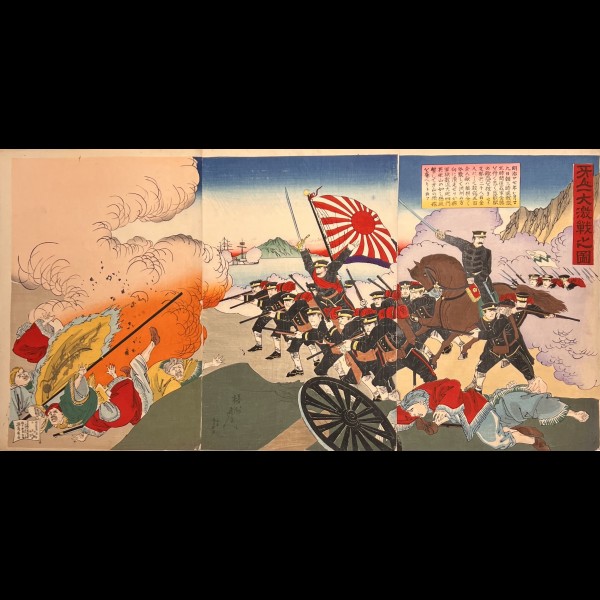CHIKANOBU TOYOHARA (1838–1912)
BATAILLE DE SEONGHWAN
Beautiful triptych in very fresh colors formerly mounted on tabsObanNishiki-e1894The Battle of Seonghwan (Seikan) was the first major land confrontation of the First Sino-Japanese War. It took place on July 29, 1894 in Seonghwan, near Cheonan, in the Korean province of South Chungcheong. It is sometimes called Battle of Asan...
300.00 €
VICTOIRE A ASAN
Beautiful triptych in very fresh colors formerly mounted on tabsObanNishiki-e1894 "At 3 am on July 29 a battle commenced and after five hours our troops were completely victorious" begins the text panel account of this print. Chikanobu depicts two officers leading the assault with the nation's flag held high. A Chinese canon in the foreground is turned around with its barrel down and its carriage broken. The Chinese soldiers in this print are dressed in cumbersome archaic uniforms, making them seem helpless against the Japanese troops smartly dressed in modern European style uniforms.The Battle of Seonghwan (Seikan) was the first major land confrontation of the First Sino-Japanese War. It took place on July 29, 1894 in Seonghwan, near Cheonan, in the Korean province of South Chungcheong. It is sometimes called Battle of Asan...
300.00 €


